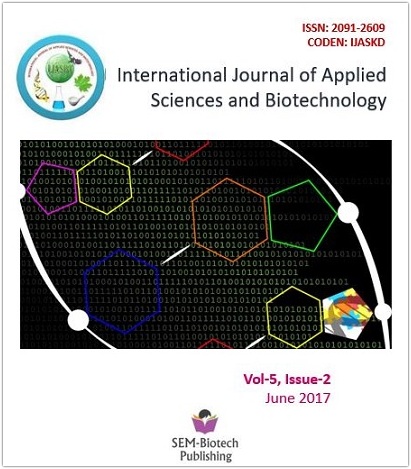Bio-removal of Azo Dyes: A Review
DOI:
https://doi.org/10.3126/ijasbt.v5i2.16881Keywords:
azo dye, microorganism, decolorization, biosorption, enzyme, nanoparticleAbstract
Synthetic dyes are widely used in textile, paper, food, cosmetics and pharmaceutical industries with the textile industry as the largest consumer. Among all the available synthetic dyes, azo dyes are the largest group of dyes used in textile industry. Textile dyeing and finishing processes generate a large amount of dye containing wastewater which is one of the main sources of water pollution problems worldwide. Several physico-chemical methods have been applied to the treatment of textile wastewater but these methods have many limitations due to high cost, low efficiency and secondary pollution problems. As an alternative to physico-chemical methods, biological methods comprise bacteria, fungi, yeast, algae and plants and their enzymes which received increasing interest due to their cost effectiveness and eco-friendly nature. Decolorization of azo dyes by biological processes may take place either by biosorption or biodegradation. A variety of reductive and oxidative enzymes may also be involved in the degradation of dyes. This review provides an overview of decolorization and degradation of azo dyes by biological processes and establishes the fact that these microbial and plant cells are significantly effective biological weapon against the toxic azo dyes.
Int. J. Appl. Sci. Biotechnol. Vol 5(2): 108-126




